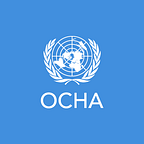“We feel safe here.” Life inside an Iraqi displacement camp
The October launch of military operations to retake Mosul from ISIL has forced an additional 84,000 men, women and children to flee their homes. The offensive is part of a wider effort to bring large swathes of Iraq back under Government control.
Military operations in Kirkuk Governorate to the south-east have also triggered new waves of displacement. This adds to an existing humanitarian crisis, which had already forcibly displaced 3.1 million people in Iraq.
The majority of internally displaced families are now sheltering in camps set up by the Government and humanitarian partners. These families have fled conflict and the risk of abuse by ISIL, and endured the scarcity of food, water and medicine. As many as one million people in and around Mosul city cannot access humanitarian assistance because of ongoing fighting. Here, displaced men and women share their experiences with OCHA.
Hassan and family at Qayyarah Jad’ah camp
Hassan stands with this three-year-old daughter, Narges, in line for treatment at a mobile health clinic run by NGO International Medical Corps with the World Health Organization. Hassan and his family walked for three days to reach Qayyarah Jad’ah camp two weeks ago.
“She [Narges] developed an allergy after we arrived. I do not know why, maybe all the smoke,” he said, referring to the huge cloud of smoke and soot blackening out the sun.
When ISIL retreated from Al Qayyarah, it set 20 oil wells on fire, only one of which has been extinguished. ISIL’s scorched-earth tactics pose immediate and long-term health and environmental risks. Environmental destruction during armed conflict can impede aid deliveries, hamper recovery efforts and increase displacement.
Mohammed, his wife and four children at Qayyarah Jad’ah
All of the families arriving in this camp have lived under ISIL’s control for more than two years, and life has been difficult. ISIL members reportedly began looking for people they suspected of passing information to the Iraqi security forces, often brutalizing and killing them.
“Before ISIL took control of my town, I worked as a journalist,” explained 60-year-old Mohammed. “ISIL does not like journalists. I had to stop working and stayed at home for over two years.”
Two weeks ago, as military forces advanced further towards his village, Mohammed had to choose between staying, potentially being caught between the front lines, or abandoning his home to try to reach safety. He decided it was too dangerous to stay. Mohammed packed his wife and four children into their car on a precarious drive towards Al Qayyarah. “We feel safe here. We are happy to be here.”
Mohammed hopes to return to his village and work as a journalist again as soon as the situation is safe. “The world has to hear about ISIL’s human rights abuses and atrocities,” he said.
Hamda Awal and her disabled son at Qayyarah Jad’ah
Hamda Awal, in her early fifties, fled Hawiga with her grown-up disabled son. “Daesh [ISIL] is in Hawiga,” she said, using the Arabic acronym for ISIL. “I was scared for our lives the whole time we fled. If they had caught us, they would have killed us,” she added matter-of-factly.
Since early August, more than 47,000 people have fled Hawiga. Along their journey, they faced extreme risks of ambush, execution by ISIL or stepping on explosive remnants of war. In early November, 18 displaced people were killed fleeing Hawiga when their truck was destroyed by roadside bombs.
“Because my son is sick, I should get money from the authorities. But I cannot travel to Kirkuk to request the paperwork needed,” said Hamda. For now, she has no option but to stay in the camp.
Salim at Qayyarah Jad’ah camp
Salim set up a small shop at one of the camp’s main throughways a few days after arriving.
“I sell eggs, chips, chocolates, cookies, some juices,” he said. “I go to Qayyarah town to stock up every few days. People in the camp only have a bit of money, so I sell things cheaply in small quantities.”
Displacement has forced most people to abandon their businesses and professions. Humanitarian assistance guarantees survival, but people want to work so they can support themselves.
Thaksim, Omar and Mohammed, school teachers at Qayyarah Jad’ah camp
Among the families displaced from Mosul, more than 24,500 are children, over 100 of them separated from their families. Many children have not entered a classroom in over two years because their families withdrew them for fear they would be indoctrinated or forcibly recruited by ISIL.
In Qayyarah Jad’ah camp, UNICEF and international NGO Save the Children have set up four temporary schools in tents. Displaced teachers Thaksim, Omar and Mohammed (left to right, all 23 years old) teach at the school.
“We teach several hundred kids from three to 17 years, all grades,” said Thaksim. “I am a geography teacher, but we also teach English, Arabic and math.”
So far, more than 3,500 children have been enrolled in temporary learning spaces across various IDP camps.
